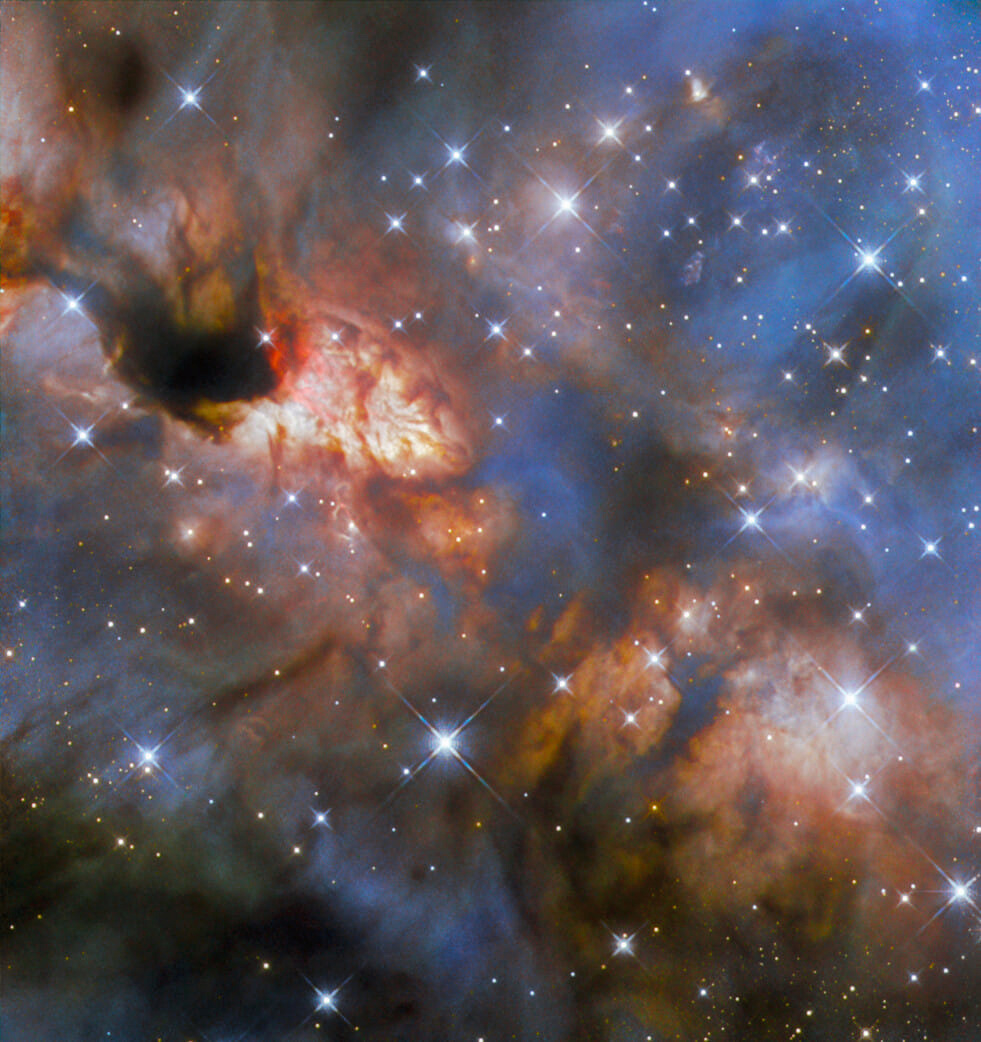A massive star – about 30 times the mass of our Sun

This image from the Hubble Space Telescope is of a relatively nearby star-forming region known as IRAS 16562-3959.
The image is full of color and activity, and is located inside the Milky Way, about 5,900 light-years from Earth in the constellation Scorpius.
Nuances in color are the result of four separate filters. These thin strips of highly specialized material can slide in front of the device's light sensors, allowing very specific wavelengths of light to pass through them with each observation. This is useful because specific wavelengths of light can tell us about the composition, temperature and density of an area.
In the center of the image, IRAS 16562-3959 likely hosts a massive star — about 30 times the mass of our Sun — that is still forming. The occult clouds appear dark because there is a lot of dust that blocks the light and blocks the near-infrared wavelengths of light observed by Hubble.
However, near-infrared light leaks mainly from the upper left and lower right sides where a powerful jet from the massive protostar has blown away the dust. Multi-wavelength images, like this stunning Hubble view, are helping us gain a better understanding of how the most massive and brightest stars in our galaxy form.
Source: websites

